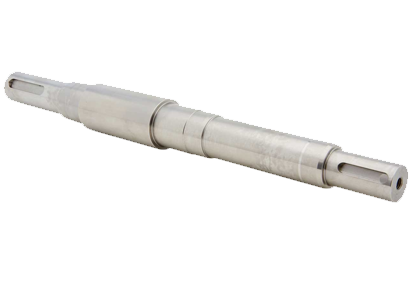
What is a Pump Shaft?
A pump is a mechanical device that moves fluids or gases from one point to another. It is an essential tool used in various industrial and domestic applications. The functioning of a pump relies heavily on its various parts, and one such critical component is the pump shaft.
A pump shaft is a critical component of a pump responsible for transmitting the motor’s power to the impeller. It is a rod connected to the motor on one end and the impeller on the other. When the motor rotates the shaft, it, in turn, rotates the impeller, which transfers energy to the fluid, thus pumping the fluid from one point to another. A pump shaft must have excellent torsional strength and stiffness to withstand the high-speed rotation and loads imposed on it.
Types of Pump Shafts
Pump shafts can be broadly classified into three types: solid, hollow, and stepped shafts.
Solid Shafts – a single bar with the same diameter throughout.
Hollow Shafts – a tube with a hollow interior and a solid exterior surface.
Stepped Shafts – a shaft with different diameters, usually having a larger dimension near the impeller and a smaller one near the motor.
Solid shafts are the most common and widely used pump shafts. However, hollow and stepped shafts are used in specific applications with different diameter requirements.
Materials Used in Pump Shafts
Pump shafts are made using various materials depending on the type of application and the fluids that need to be pumped. The most commonly used materials for pump shafts are stainless steel, carbon steel, titanium, and bronze.
- Stainless Steel is a widely used material for pump shafts due to its excellent corrosion resistance and durability.
- Carbon Steel – it is an economical option for pump shafts, especially in applications where high corrosion resistance is not required.
- Titanium – titanium shafts are used in applications requiring high strength, low weight, and excellent corrosion resistance properties.
- Bronze – bronze shafts are used in marine applications due to their excellent corrosion resistance properties.
Factors Affecting Pump Shaft Selection
Various factors must be considered when selecting a pump shaft. Some of the critical factors are:
- Material compatibility – the shaft material must be compatible with the pumped fluid to avoid chemical reactions.
- Operating conditions – the operating temperature, pressure, and speed affect the selection of the material used in the pump shaft.
- Torsional strength – the shaft should have enough strength to withstand high torque loads.
- Fatigue properties – the shaft must be able to withstand cyclic loads. Therefore, it must have good fatigue properties.
- Corrosion resistance – the shaft should resist corrosion by pumping fluid.
Maintenance of Pump Shafts
Pump shafts require regular maintenance to ensure that they function correctly and last for a long time. Here are some of the maintenance practices that should be followed:
- Regular inspection – pump shafts should be inspected regularly for any signs of wear and tear or damage.
- Lubrication – lubricating the shaft reduces friction and prevents wear and tear of the shaft.
- Cleaning – pump shafts should be cleaned regularly to remove any dirt, grime, or debris affecting their functioning.
- Bearing replacement – bearings should be replaced when worn out to prevent any damage to the shaft.
Conclusion:
The pump shaft is an essential component of a pump, and its proper selection and maintenance are crucial for the efficient functioning of the pump. The type of pump shaft used, the material used, and its structural design all play a significant role in the smooth functioning of the pump. Therefore, it is essential to consider all these factors while selecting a pump shaft. Proper maintenance practices such as regular inspection, lubrication, cleaning, and bearing replacement can reduce the chances of any breakdowns and ensure a longer pump lifespan.

